At Coverings Connected in April 2020, we virtually honored 12 outstanding projects that demonstrated spectacular craftsmanship and creativity in the use of tile & stone. This week we’re putting the spotlight on the Commercial Tile Design: Hospitality winner.
Commercial Tile Design: Hospitality
Mercado Little Spain
Juli Capella
New York, NY
The design concept of the culinary space Mercado Little Spain is inspired by two main ideas:
- A market. A myriad of stops of different dimensions, which, under one great structure, configure a path through small streets to take a stroll, shop or taste. They are live spaces, full of color. A new alternative to the standard traditional supermarkets.
- A town. A labyrinth of irregular small streets, typical of a small town, which normally converge in the “Plaza Mayor” or Town Square, where people get together and celebrate.
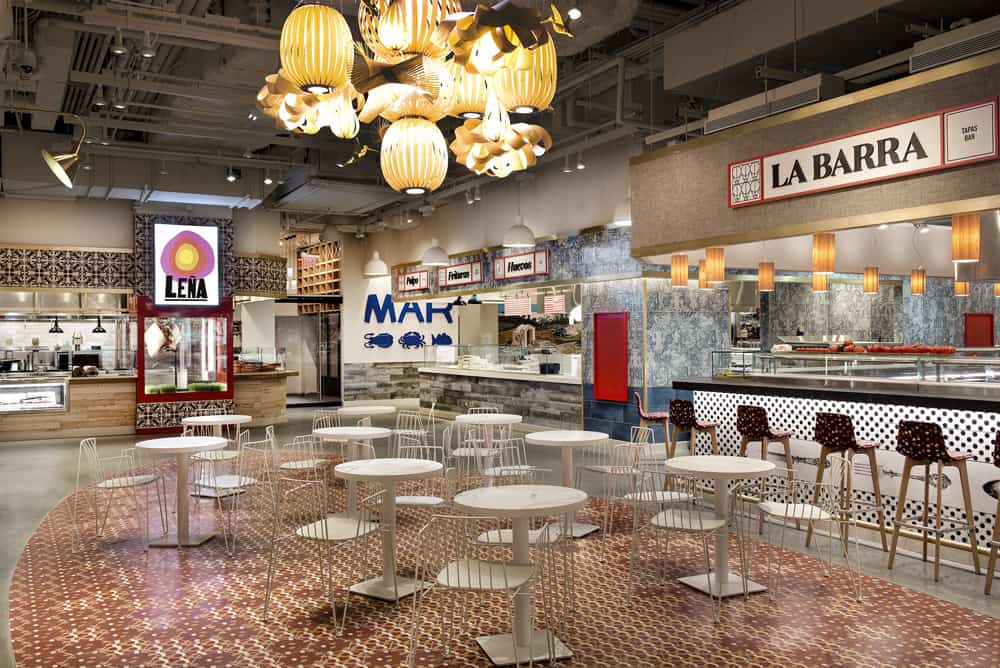
The configuration is less organized, more organic with rounded corners, small squares, and peculiar spaces. The gamble of Chef José Andrés to offer a cuisine 100% from Spain, was carried into the strategy of this design: It was necessary to make it in a space with Spanish design, with materials and furniture from renown Spanish companies.
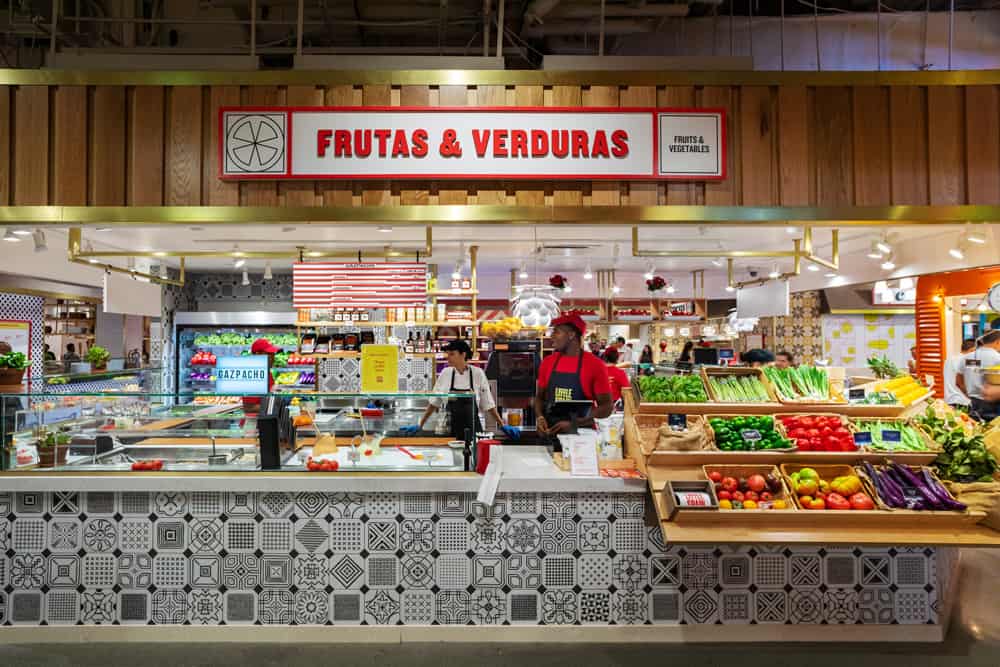
Also, the graphic images from the Lo Siento (I’m Sorry) Studio, as well as the many artistic works are all from Spanish artists. It is not a theme restaurant, but a space of genuine Spanish vanguard design.
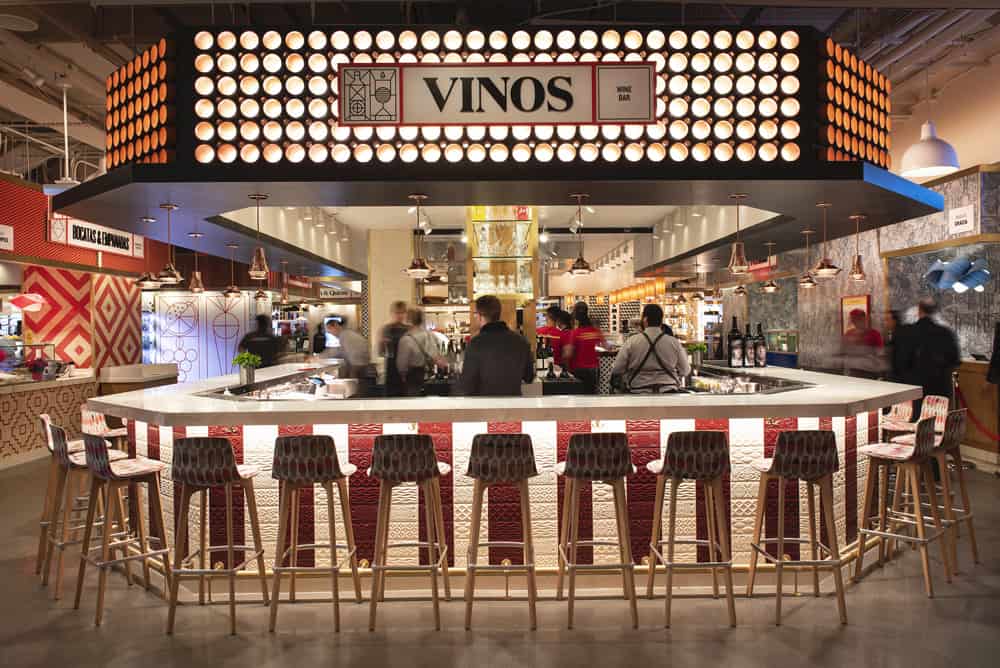
Mercado Little Spain is divided in two different interconnected spaces. The Spanish Diner, an interior/exterior space, located under the robust metal structure of the High Line in the Hudson Yards area of Nueva York. The graphic design of this restaurant is a work by Mikel Urmeneta from Navarre.
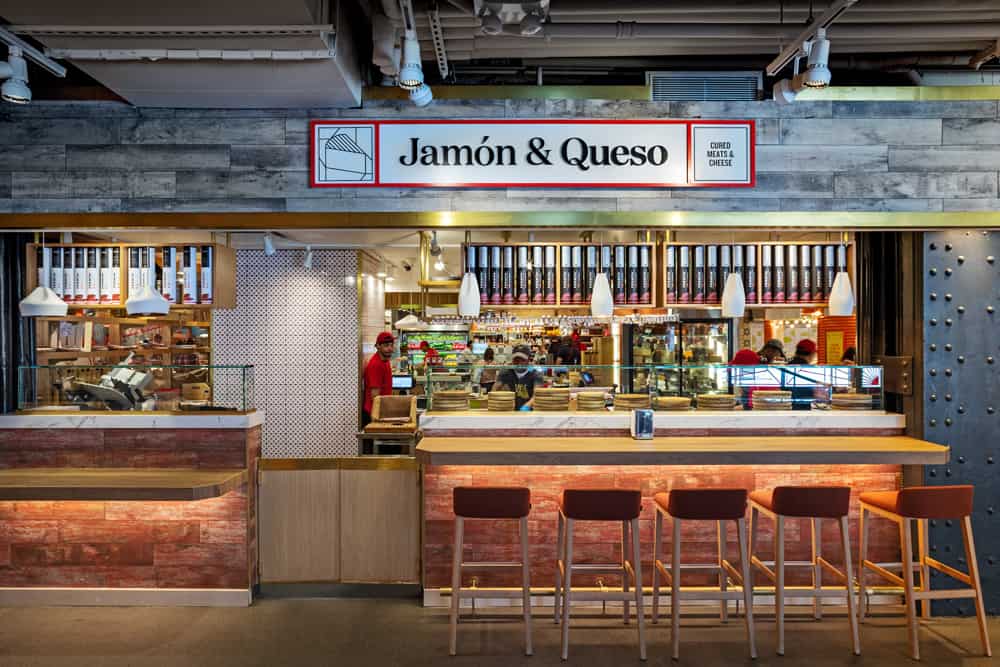
The main space is reached from 30th Street, from the hall of the upper floor of the shopping center or from the Spanish Diner itself, going through a hallway decorated by a great mural done by the artist Sergio Mora. The main area is an ample space where the different stops are located with a diverse amount of gastronomic choices.
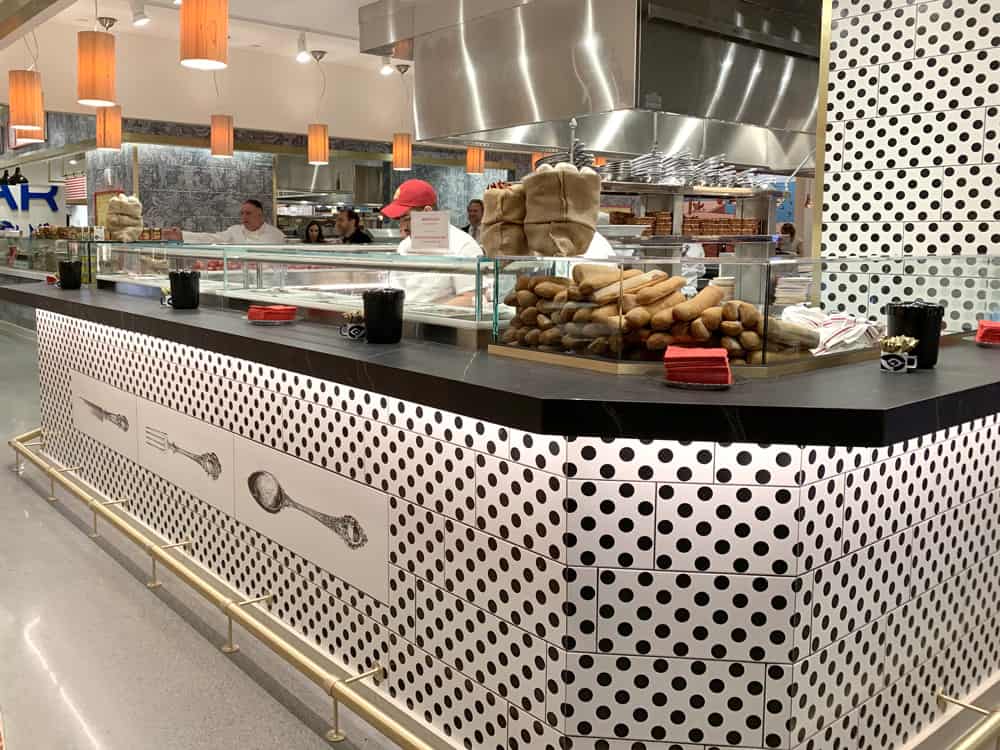
The meandering streets shape a walking circuit leading to the Plaza Alta (High Square); a wide area where visitors can sit to eat, or it can be used for meetings. There are also two more restaurants in this area: Leña (Firewood), which specializes in grilled food with graphics by the designer Oscar Marin.
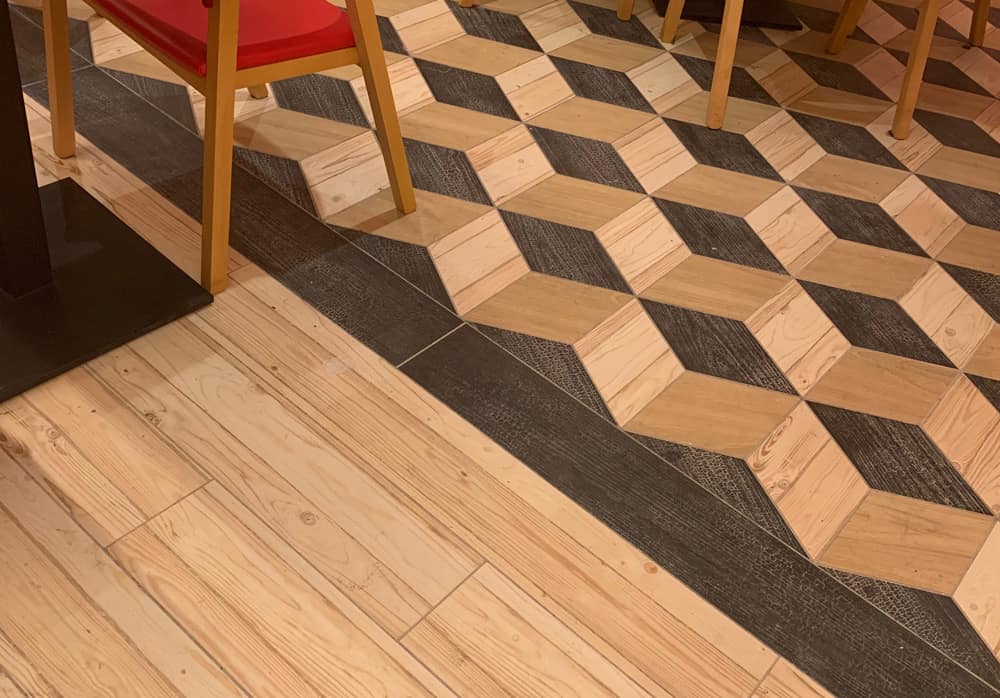
The second restaurant, Mar (Sea), specializes in seafood and is decorated by a large mural done by Javier Mariscal from Valencia. The graphics in the restaurant are also his works. When it came to pick the coverings, there was only one decision: ceramic tile.
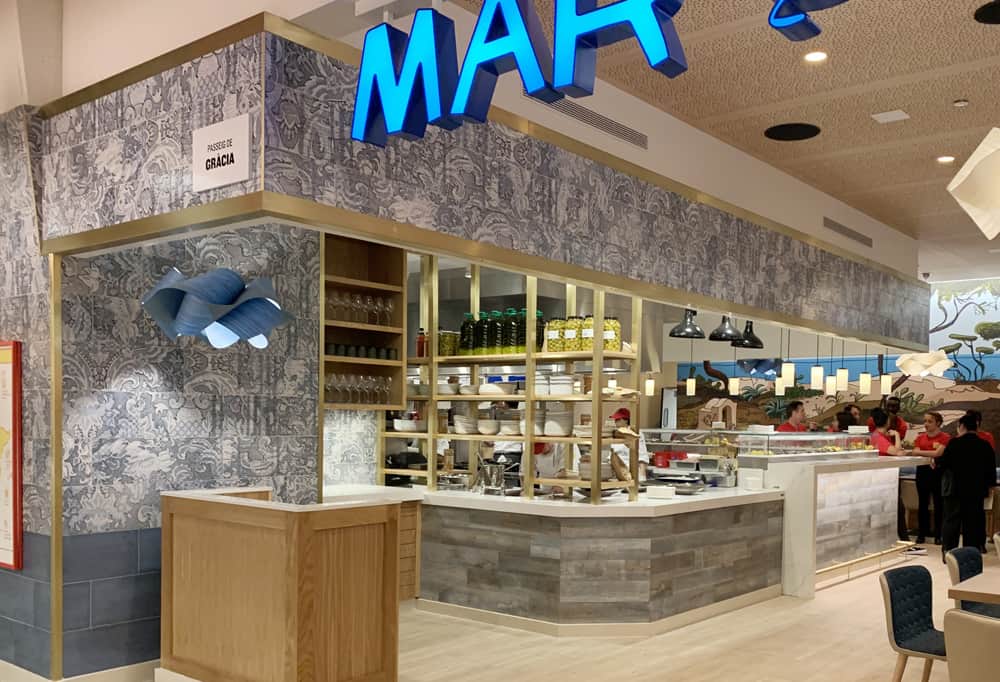
All the stops were to be covered and identified by ceramic tile. Ceramic tile is a material with a rich history and tradition in Spain, and a lot of Americans identify the atmosphere of bars and restaurant from our county by it. It is a high-resistance material, easy to clean and hygienic. And above all, allows for an infinite amount of possibilities from the visual point of view: chromatic and dimensional. Making it the only choice as a the aesthetic leit motiv of the project. For this project Ceramicas Vives was selected and different tiles from their catalogs were picked for each eatery.
Do you have a recently completed project that features innovative design and installation of tile & stone? Consider entering it to the 2021 CID Awards – the submission portal will open this fall.






